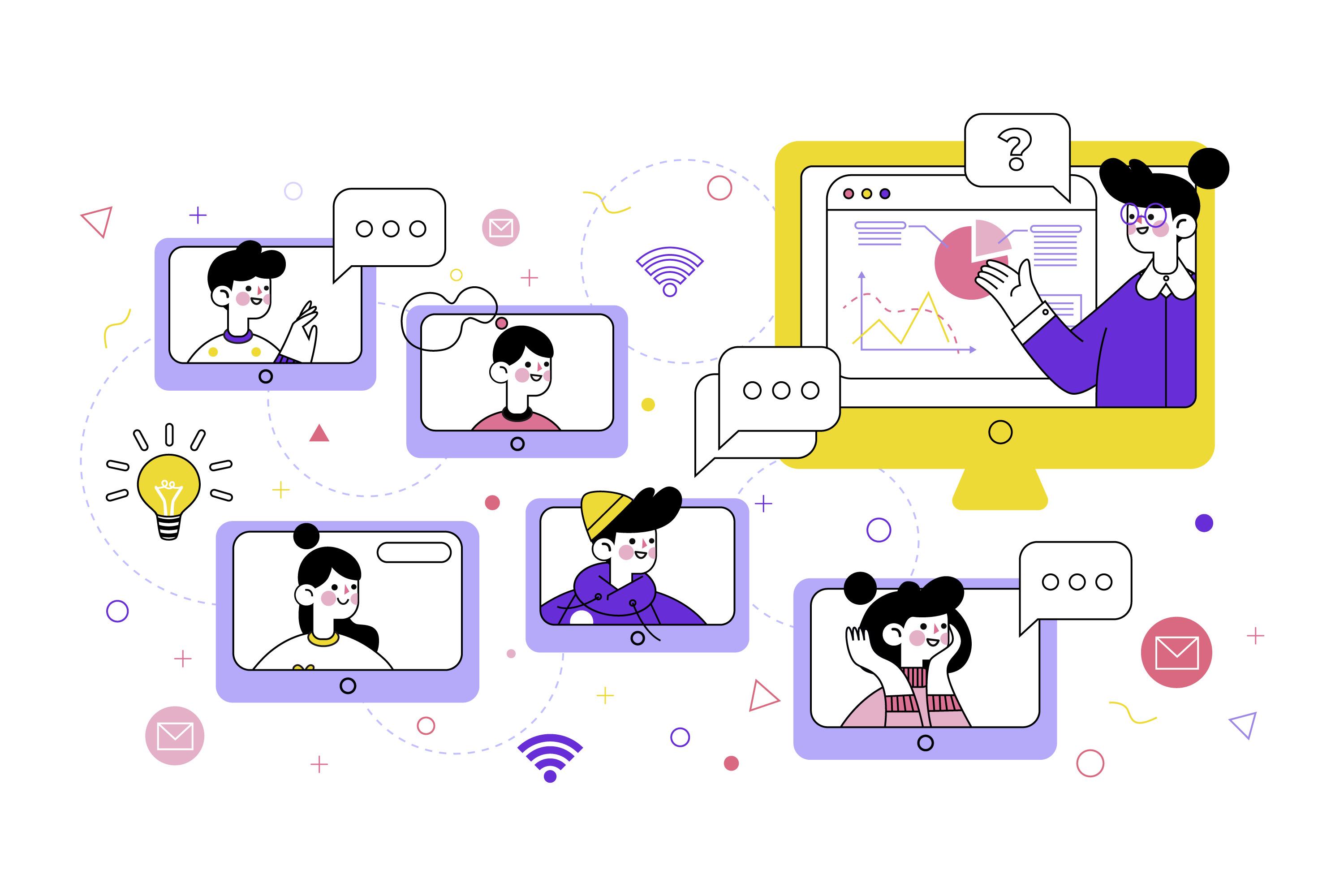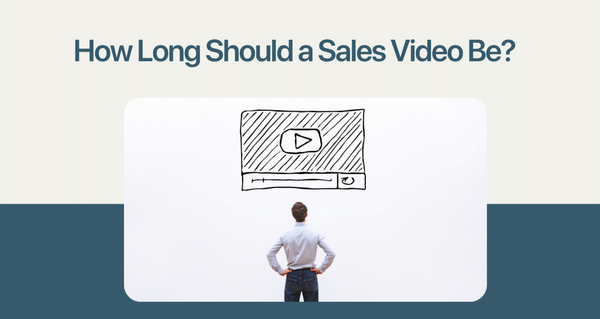The coronavirus pandemic has changed our world. There is no doubt about it. Education is one of the parts of our lives that has been affected the most, with students falling behind, especially in the initial few months of the pandemic. Schools have been closed down since this disaster started, affecting more than one billion children around the globe. But with the omnipresence of this little thing called the internet, even if the virus has restricted our physical movements, kids can still attend classes.
Many educational institutions have started maintaining their presence in cyberspace. The interaction between teachers and students is carried out online, classes being taught via the internet. And videos have become the part and parcel of these virtual classrooms.

Why Use Video Content In The Classroom?
Even before the pandemic, we were moving closer to a video-based, internet aided learning using digital tools and resources. With new pieces of knowledge being added every millisecond, the old way of classroom learning might be insufficient. To process and filter every tidbit of information granted to us round the clock, more complex systems would be necessary. Though this way of education might seem novel now, we are not far from an age where this would be the only normal.

Creating video content would not always be cheap, but the long-run returns it can generate – in terms of both societal and monetary perspective - can offset the initial investment. Besides the quality of the video or its production design comes only secondary to how much they explain and help understand a concept.
So it is important to fully realize all of the benefits that come with using video content in the classroom.
1) Increase In Flexibility
Using video content offers more flexibility in terms of constraints of time, location, as well as curriculum. Video content eliminates the need for the teacher to be physically present in the classroom. Even if the teaching content is streamed in real-time, it can be made available afterward through recordings. Students can watch the videos anytime, anywhere, and at any pace they choose.
Even in the post-pandemic phase, a hybrid learning that blends video content with classroom learning can offer greater flexibility to the curriculum, improving the quality of education.
2) Greater Student Engagement
Why do you think YouTube has achieved so much popularity as a learning platform in such a short time? Most students would prefer to watch a video to learn something than to pour over the pages of a weighty tome.

People have very small attention spans, and especially at home, there may be too many distractions vying for the attention of the students. If we apply the same algorithm that drives people to reach the video game controller for another dose of a dopamine hit, then believe it or not we might actually achieve the much-hyped “making education fun.” Videos have a much bigger capacity to hold one’s attention. Even if “a picture speaks a thousand words” sounds like a platitude, there is no denying that videos appeal to our audio-visual senses, bringing about much engagement from the part of the student. Videos aid comprehension and can appeal to emotions, firing up neural pathways in our brains.
3) Bridging The Educational Divide
Many courses offered in top-notch educational institutions become accessible to anyone through digital learning platforms. Demand and supply would push down the actual cost of education making universal education less of a pipe dream. Nowadays with the spread of the internet, you can learn almost anything online.
As physical infrastructure is not needed, the cost of teaching 100,000 students is essentially the same as teaching 10 students. This encourages institutions, especially the reputed ones, to open up access to their courses. This can go a long way in bridging the educational divide in the world. The circumstances of a student- be it geographical, financial, or others- become less of a barrier towards learning.
4) Customized Learning Experience
Research into improving education programs keep proving that the requirements of each student are different. A video or a video compilation can give more attention to each individual student much more than a regular teacher. It becomes possible to back up, fast forward, or suspend a video for the time being letting students learn in their own time and at their own pace. And you can put in mechanisms to adjust the curriculum according to their own needs, collect feedback from them, and improve the experience.
5) Practical And In-depth Learning
Videos increase comprehension and understanding among students. Bringing in animation in videos can help explain even the toughest of concepts. Videos would break down complicated matters, explain topics piecemeal, one step at a time. Demonstration videos can be included in the curriculum. This would help students get out of the theory and into a more practical world. Students can learn in-depth about the topics that interest them and in an independent fashion. Through videos, a particular concept can be explained in detail.

Are Live Classes Enough?
A lot of institutions are conducting live classes during the pandemic. And you might be tempted to believe that the best and only way to reach your students is through live sessions on online platforms like Zoom or Google Meet. They do have their benefits, but they also have drawbacks, and may not prove to be enough.
- With online live sessions, there is very little flexibility in the schedule. The instructors and the students all need to be present at the same time.
- Variations in internet connectivity can also cause trouble with live videos.
- Scalability is one of the major advantages that pre-recorded educational videos have over live sessions. Several platforms have rather small participant limits.
- Some platforms have time limits on their free sessions. Once the limit expires, you would need to start over.
- It is hard to properly address questions and field engagement from a large number of students in a live session. With interactive platforms like VideoForm educators can connect with a large number of students without compromising on the personal feel of the experience.
- Pre-recorded videos deliver an overall smoother and better experience. You can easily work off a script, minimize mistakes, and set up a way better UI.
Even if you feel that you need to have live classes to properly interact with your students, you can always record those classes and distribute them along with the pre-recorded videos, to ensure no one is missing out.
How VideoForm Can Help
VideoForm is a versatile tool that can help you out in lots of ways, especially during this new normal. VideoForm lets you create customized and interactive videos that give viewers the feel of human contact that they so lack nowadays.
VideoForm can be used by companies for everything from product demos to collecting video feedback and conducting employee training, but you would be wrong to assume that VideoForm has no purposes outside the business world. Interactive videos created with VideoForm can do so much, create videos to suit any need of yours.
Here, we are going to talk about how VideoForm can change the way you teach, and help students, teachers, and institutions cope in these hard times.
1) Built-In Screen Recording
A lot of teachers are hesitant to make video lectures because they feel like they need an actual board that they could write and draw on to properly explain the concepts in a way the students will understand. That is the way that they are familiar with. They may be reluctant or uncomfortable reading off presentations or taking lectures with static images in the background.
But nowadays you can digitize the drawing board. There are several whiteboard applications on the web, and you can pick anyone for the purpose. And then with VideoForm, you can use the screen recording feature to capture your screen and record whatever the teacher scribbles on the board, along with the explanations they give in the background.
We also talked above about the drawbacks of limiting education to live classes during this pandemic. With the screen recording feature of VideoForm, you can record any live classes that you feel like you need to conduct, and create VideoForms out of them too. This gives students access to the live classes they missed or those they simply needed to see again, either because they need to understand it better, or maybe because they missed parts of it the first time. They can understand the classes better this way and ask more doubts if they want to.
2) Interactive Video For More Immersion
You can utilize VideoForm to create educational videos that are interactive and engaging in a way pre-recorded videos are usually never capable of being. You can add steps to your VideoForm that lets you decide what happens when a viewer clicks on a button. You can also collect responses from viewers, in any format- audio, video, or text. Interactive video is advantageous on various levels-
a) Flexibility
VideoForm lets you create structured and flexible videos. You can make video compilations that let the viewer choose where they want to go. This offers the learner flexibility and lets them do things at their own pace. Viewers can choose the level of difficulty they are comfortable with for example, and according to their choice, they can be redirected to appropriate videos.
b) Entertaining
To hold the attention of your students, you can make your videos entertaining in addition to educational. You can maybe use a quirky GIF in your video, from VideoForm’s library, to add a little humor to a dry educational video.
c) Q&A
You can collect questions from students at regular intervals, allowing them to post doubts about the content. You can even take feedback from them and let them tell you what they think can make the videos better. With the capability to take feedback in different formats, students can respond in any way they are comfortable with.

3) Evaluate Students Right From The Video
With VideoForm you can test your students on the subject matter at regular intervals by collecting responses from them. This ensures that the student is paying attention and understanding what is being taught. If the student fails the test you can give them the option of going through the content again. Or redirect them to the appropriate level of the content according to their answers.
You can conduct tests and pop quizzes through VideoForms and grade your students. Different forms of questions can be included, descriptive, MCQs, true/false questions, and so on. Since responses can be collected in audio, video, or text format, you can also evaluate your students on other parameters. By asking them to respond via audio or video, you can ensure their involvement and know they are not cheating.

4) Track Student Performance In Analytics
Upgrade your plan and you’ll get access to Analytics for your videos so that you can get the most out of your VideoForms. With analytics, you can track the views and progress of your videos.
Analytics helps you track student performance and also shows you how well your videos are received so you can optimize them to ensure the best experience.
You can track impressions, interactions, answers, and completions, from your students. You can check the responses of all of your students as a whole, or check the individual performance of a student.

Try Out VideoForm Free Today
The silver lining of this global pandemic, so to speak, would be that it has brought many benefits of video-based learning to the spotlight. Compared to conventional classroom learning, a video-based, virtual teaching-learning process is much more efficient, saving time, energy, money, and fuel. With a great tool like VideoForm, you can have an entire video learning arsenal set up, that you could put to good use even long after the pandemic is over.
If you're still not convinced, try it out and see for yourself. You can sign up to VideoForm today and create your own VideoForm, absolutely free of cost!




